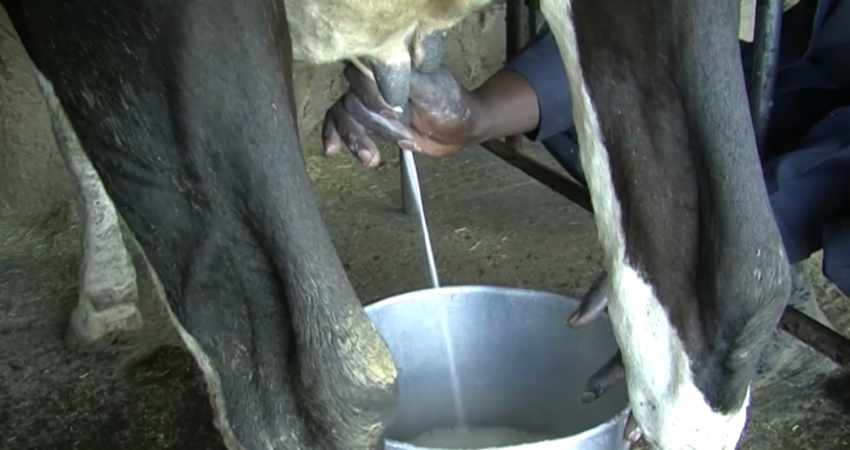

If you observe traces of blood while milking, your cow has clinical mastitis, a visible infection of the mammary glands. Mastitis is a management disease that is very costly to the farmer. The biggest cost is loss of production given that once the udder is infected, the cow is not able to get back to its original production levels. The fact that the disease keeps recurring points to challenges in your management particularly of the milking process.
Mastitis causing agents enter the mammary glands through the teat opening and move up the canal to multiply in the udder tissue. Milk in the udder provides a conducive environment for the multiplication of the bacteria.
For a start, ensure that your cow’s environment is cleaned and disinfected regularly as are all your milking equipment.
As you prepare to milk, wash your hands with water and soap and disinfect, wash the cow’s udder with warm water and then dry with a disposable clean paper towel.
Before milking, use a strip cup to check if any of the quarters are infected. You may also use a CMT kit. Infected quarters must be milked last.
Ensure your milking jelly has its cap always replaced after use as this can be a source of infection. Milk the cow and after finishing, apply a post milking teat dip. If more than one cow is being milked, ensure a cow with sick quarter(s) is milked last.
Provide dairy meal to your cow after milking to ensure she remains standing until the teat canal closes. Note that the teat canal remains open for about 30 minutes after milking and a cow lying down in an unclean floor would have disease agents enter the teat opening.
In this case, get a qualified vet to check on your cow, collect milk samples for the lab to do culture and sensitivity test. The lab will then advise you on the drugs that the disease agents are sensitive to.
Ensure you use the drugs according to the manufacturer’s instructions. Your vet will also determine whether systemic treatment (injections) is necessary.
 Contact Jaguza Support
Contact Jaguza Support